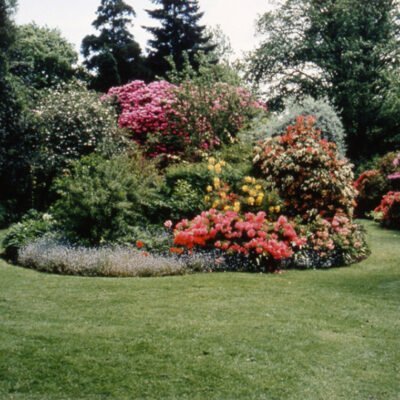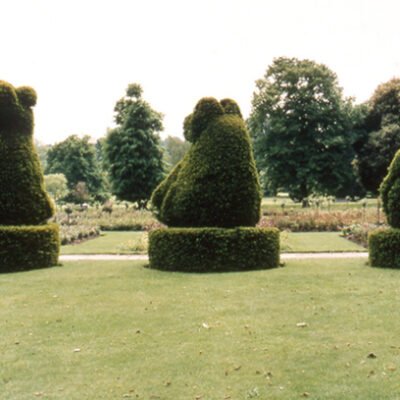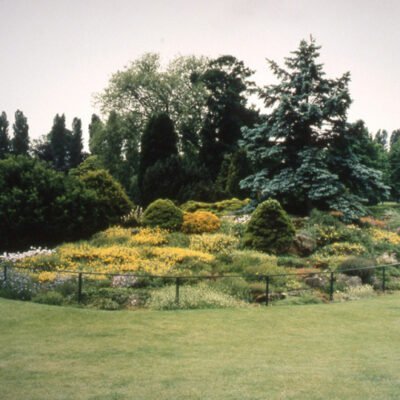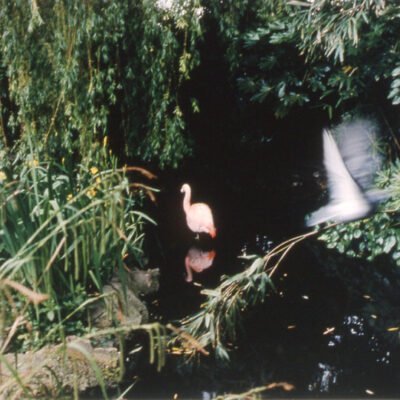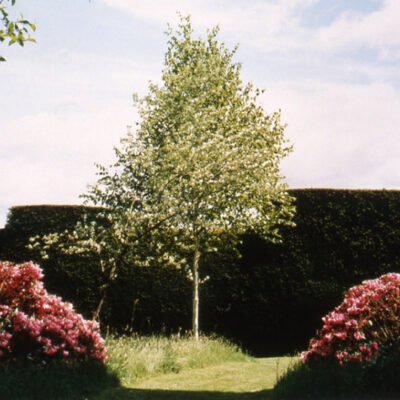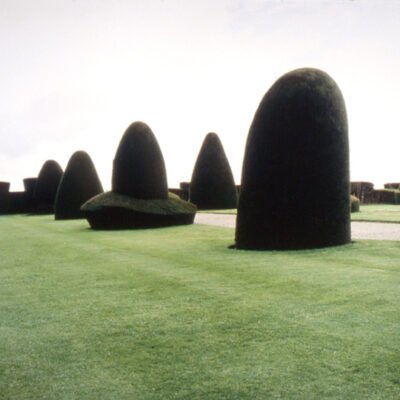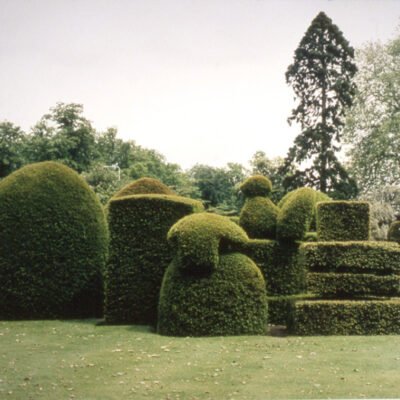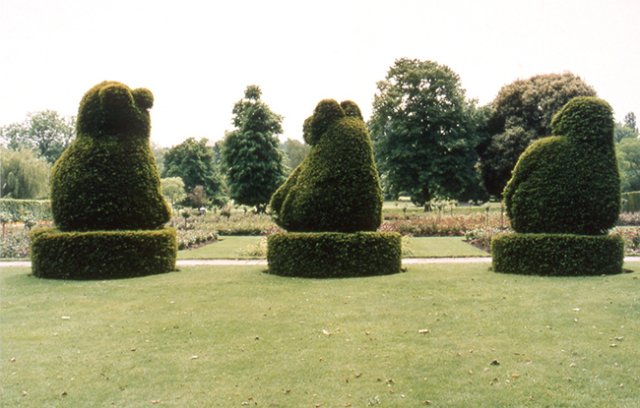

Ann Pizer
Ann Pizer’s body of photographic work, Folly, stemmed from her long-time interest in topiary, a fascination that began with a few childhood years in England and a series of magical children’s books. It was on a certain visit to England that she set out to explore some of Britain’s extraordinary gardens, with a special interest in the carved yews whose whimsy she hoped to capture on film.
A folly is by its very nature lighthearted but contradictory: an act of foolishness, undertaken without good sense, an irrational plan or idea. Pizer’s lush photographic images of ornamental English gardens suggested the folly of planned beauty. Through small details and carefully chosen perspectives, the pictures emphasized the accumulated human effort necessary to maintain these fictions, these specialized environments whose illusions of untended natural grace belied their artifice and their mystery. Saturated with a rainbow of color from carefully cultivated flowers, populated by fantastically sculpted topiary, and compulsively ordered by neat, defining rows of hedges, these gardens exemplified nature as a human construction. Serving no practical or natural purpose, they were created solely as an offering for human delight and pleasure.
Pizer’s work explored a variety of perspectives on beauty and pleasure. It was appropriate that Pizer’s photographs included no representations of people. We never saw the gardeners, or any other visitors to the gardens, for that matter. The agents of this garden’s beauty were invisible, allowing for the uninterrupted illusion of nature, and we in effect became the garden’s visitor.
